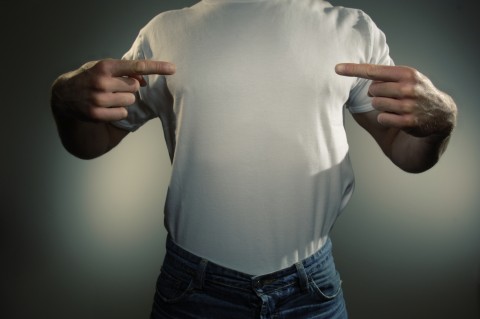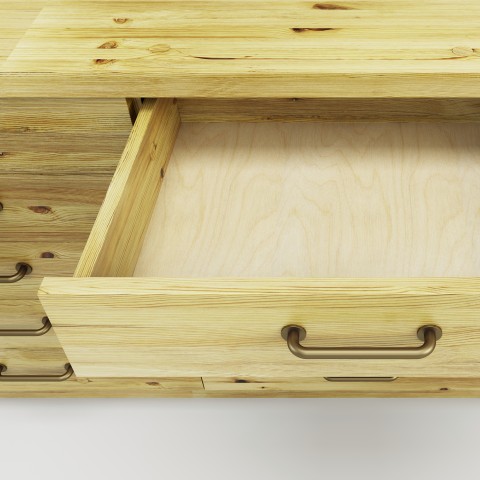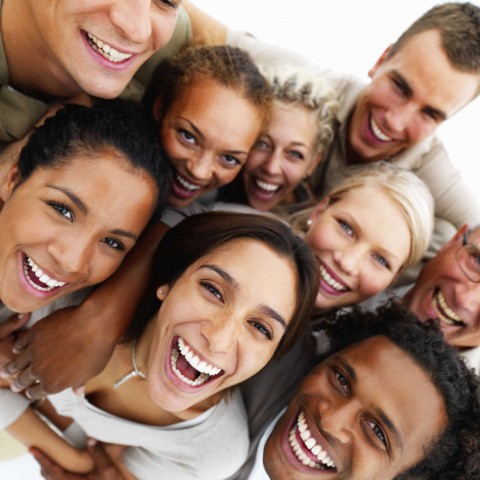
Portuguese is a complex language and people who are learning how to speak it often complain about its difficulty. Well, besides the verbs, adverbs, and syntax construction, there’s also the nonverbal communication in Brazil that’s pretty rich.
Luckily for you, we’re here to help you dominate the body language in Brazil. As you might know, Brazilians are particularly expressive with their hands, so we’ll be looking at the most common Brazilian hand gestures in addition to other body gestures.
In this article, we’ll explain what the offensive hand gestures in Brazil are and much more.
You can approve of something, disapprove, tell that you’re in trouble, allow someone to come in, say hello, and so much more without using words. You’ll see exactly how in a bit.
Table of Contents
- Body Postures
- Hand Gestures in Brazil
- Facial Expressions and Another Portuguese Gesture Tip
- Conclusion
1. Body Postures
There are plenty of Portuguese body gestures, and the best way to start this concise guide is by analyzing the body language and gestures in Brazil that are easiest to identify. The focus of these following postures is the movement of the torso and the limbs.
Whether it’s the full torso or just part of it, these postures will be more pronounced than any other types of Brazil nonverbal communication.
1- “What can I do?”
O que posso fazer?
You had a huge problem to solve but couldn’t handle it. Oh no… In fact, everything went wrong and there’s nothing you can do about it. Who would have thought? What can you do now?
Nothing. Unfortunately, that’s the role you’ll play from now on. But the impotence of action is sometimes too intense to put into words. So, what gesture in Brazil could express this? A passive shrug of the shoulders with the palms of your hands facing up.
2- “Come here, you!”
Vem cá
Long-time friendships are the best. It’s incredible how there are people in this world who are so easy-going, you could see them every single day and never get bored of their company.
When you get in touch with a long-time friend or someone you really care about in Brazil, don’t be shy: spread your arms open from a short distance, just like you want to hug someone.
This may be a prelude to a hug or just symbolize the affection you feel for them even before the meeting. If you want to do the gesture and run for a hug like in a slow-motion scene from a movie, go for it—this is one of the appropriate gestures in Brazil from the list. So, you won’t be misunderstood, except if you scream in their direction or do something alarming.
3- “Do you want a piece of me?”
Quer brigar?
If you’re not prone to fighting people, perhaps you should avoid this Brazilian gesture. At least, you should learn to identify it for safety reasons: a person faces you with open arms, chest puffed and head up. I’m deeply sorry to say this, but this person is willing to beat you up.
This is a notoriously classic posture in bars and pubs in Brazil after two in the morning. If you happen to get a glimpse of this cockfight routine and want to signal “peace,” don’t imitate a dove with your hand. Instead, lift your hands up, showing them your palms. Show that you’re not armed or willing to punch anyone.
Also, get some help from your friends. After all, it’s past two in the morning in a bar and this guy is an idiot.
4- “The banana”
Vai pra (aquele lugar)
The gesture popularly known as “the banana” consists of connecting your forearms in front of your face in the shape of the letter “L” or a cross. Though the cross may lead to a Christian reference or merciful meaning in the mind of the foreigner, it’s not the way it goes.
In fact, it’s the complete opposite—this is one of the bad gestures in Brazil. To “give someone a banana” is an offensive gesture and can be translated as “back off, fool,” if we’re keeping this article in the polite register.
2. Hand Gestures in Brazil
Not many people think about it, but hands are very often used as a media to communicate messages. Torso and limb gestures tend to depict graphically something the person is willing to do. Faces show emotions that are usually easy to interpret.
Hands, on the other hand (no pun intended), are closer to metaphors. Since metaphors are very much linked to social context and specific cultural backgrounds, hand gestures are the hardest for foreigners to “read.”
We’ve gathered a lot of Portuguese hand gestures so that you don’t look like an alien, while everyone else reacts to them properly.
1- Positive and Negative
These are more or less universal classics: thumbs up and thumbs down. Thumbs up equals an affirmative response, and thumbs down equals a negative response.
Many people trace the origin of this gesture to the times of the Roman emperors. You may have seen it in the movie Gladiator as a sign of mercy (thumbs up) or execution (thumbs down) for the fighters in the Colosseum.
Many historians understand this as a failed depiction of the sign, which was initially spread by the “Pollice verso” painting by Jean Leon-Jerome. Despite that, many countries use these gestures in the same way.
Still, there are accounts of the thumbs as offensive responses in many countries (like Greece). But Brazil, Portugal, Angola, and other Portuguese-speaking countries don’t fit in this group of nations.
2- So-so
Mais ou menos
The thumbs express “Affirmative” and “Negative.” But the world isn’t a black and white picture, and is instead filled with an immense palette of middle tones.
So, how do you express “more or less?”
To do the so-so sign, open one of your hands with its palm facing you. Then rotate it laterally using the wrist as the axis and rotate it back a couple of times like it’s trembling.
3- You are finished!!
This is another brawling gesture: one palm is open while the other one is closed in a fist, hitting the open palm with your knuckles.
This isn’t rocket science, but we’ll break it down to eliminate any kind of doubt. The open palm is a symbol for your beautiful face. The clenched fist is the messenger’s fist, literally (or perhaps their knee or foot).
The intensity of the hit is the violence the person is willing to inflict upon you.
We’ve already read you the message, now it’s up to you to sort out this situation…
4- “Come in” or “you are allowed to get in”
How do you know if you’re welcome in somebody’s house? Apart from knowing the person and getting invited in the first place, there’s a simple hand gesture in Brazil that will show you they really mean to allow you into their home.
If you notice their hand open with the fingers moving in their direction, this is a good sign. It’s like the person is waving their hands from you into their homes. Come on in, let’s have a cup of coffee!
5- “Go away”
You’ve learned how to identify that you’re welcome. Now, you must know how to tell if you should leave.
If a person waves their hand like in the “come in” gesture but in the opposite direction, they’re telling you to go away or get out, probably angrily. Sorry, mate.
6- Hang loose
Hawaii is a long way from Brazil, but the natives are enthusiasts of the “hang loose” gesture. In case you’re not familiar with it, the “hang loose” gesture is very popular among surfers in Hawaii and is linked to a message of “peace” or “taking it easy.” It can also show approval.
It also grew popular among some of Brazil’s top athletes, such as the tennis player Guga and the football player Ronaldinho—it’s now immortalized as “Ronaldinho’s famous gesture” in MC Bin Laden’s funk tune. So, now we consider it one of the Portuguese hand gestures.
To make “Ronaldinho’s famous gesture,” make a fist. Then, move the thumb and the little finger away from the fist, horizontally. There, you have it.
7- Knock on wood!
This one is a very superstitious gesture. When you say something that you don’t want to happen, you knock on wood (a table or any other surface) to repel the hypothesis of this event happening.
According to a scholar from the Pontifícia Universidade Católica from São Paulo, the gesture was originally a request for forgiveness of native people of the American continent and other populations to their gods—who supposedly lived inside logs and trees.
8- You’ve been cheated—sucks to be you!
This is a common gesture among Mediterranean people, and also among Brazilians who want to joke with someone about getting cheated on by their spouses – another example of offensive gestures in Brazil.
“The bull” and horns are symbols of the person who’s being cheated on. The word used to refer to this person is corno or corna (literally, “horned”).
This shameful situation is translated into a hand gesture of…horns. That is, a clenched fist with the little finger and the index finger up. It can also be done by lifting both index fingers and placing them like horns on your head.
9- What the…?
You’ve read about Portuguese hand gestures, but what about Italian gestures that are part of Brazil nonverbal communication?
Historically, Brazil was a major destination for all kinds of immigrants. The building of Brazilian industry, the substitution of slave work for paid work, and the modern country wouldn’t be possible without the presence of huge numbers of immigrants.
Among these, the Italians played a special role. The Italian immigration to Brazil began around 1870 and mobilized thousands of people up until around the rise of Mussolini in the 1920s.
So, Italian cultural traits and gestures have been incorporated into Brazilian culture. One of the most famous is the ma che, meaning “what the…?” or “what are you saying?” That’s how you should interpret this gesture if the person unites the point of their fingers, with their fingertips pointing upwards.
Whether the gesture is used as an honest question or the person is challenging you because of something foolish you’ve said is a matter of interpreting the context and their faces.
10- Middle finger up
A final example of rude hand gestures in Brazil is a universal classic. This is another American gesture that’s offensive in Brazil and probably anywhere in the world.
So, if someone shows you the middle finger, that means exactly what you thought.
3. Facial Expressions and Another Portuguese Gesture Tip
Facial expressions are relatively universal. There are scientific studies that show correct recognition rates of facial expressions above seventy percent of the sample audience.
Still, some body language in Brazil is linked to specific use of facial expressions.
Additionally, we’ll provide a useful tip about the use of body language and gestures in Brazil.
1- Put a smile on your face
It may sound strange to you, but the smile is a required mask to wear in Brazil. To show a smile and a good mood is important in social occasions.
You won’t have a lot of success flirting with only words—your smile should be the starting point. Also, smiling is fundamental for nonverbal communication in Brazilian business.
2- Different country, shorter distances
Proxemics, developed by anthropologist Edward T. Hall, is the study of how humans use space and its effects on behavior. It presents an explanation for the relationship between two human beings.
The distance between bodies can be divided into concentric areas that “describe” the interaction as intimate, personal, social, or public.
The interesting part of this topic is that this distance is conventional, meaning that the areas vary according to cultures and countries.
Typically, Brazilians tend to interact more closely than Americans or Europeans, even if they maintain “social” and “public” relations (not “intimate” or “personal”).
Without knowing this, some people might feel alarmed by the use of body gestures in Brazil at specific distances, or simply find it strange. Keep this information in mind and try to figure out the “correct” distances in your interactions.
4. Conclusion
How many of these Brazilian gestures did you know already? Are any of these new to you? We look forward to hearing from you in the comments section!
Portuguese gestures aren’t hard to master, but they demand some observation effort and practice. Luckily, this guide on Brazil nonverbal communication is a good starting point for foreigners who study Portuguese and have to figure out Brazilian habits.
Another excellent help for Portuguese learners is PortuguesePod101. The website gathers lessons, vocabulary tips, and many other useful informational tools in a dynamic and didactic form for speakers of all levels. From business body language in Brazil to the first baby steps in Portuguese language-learning, go to PortuguesePod101.com!
















